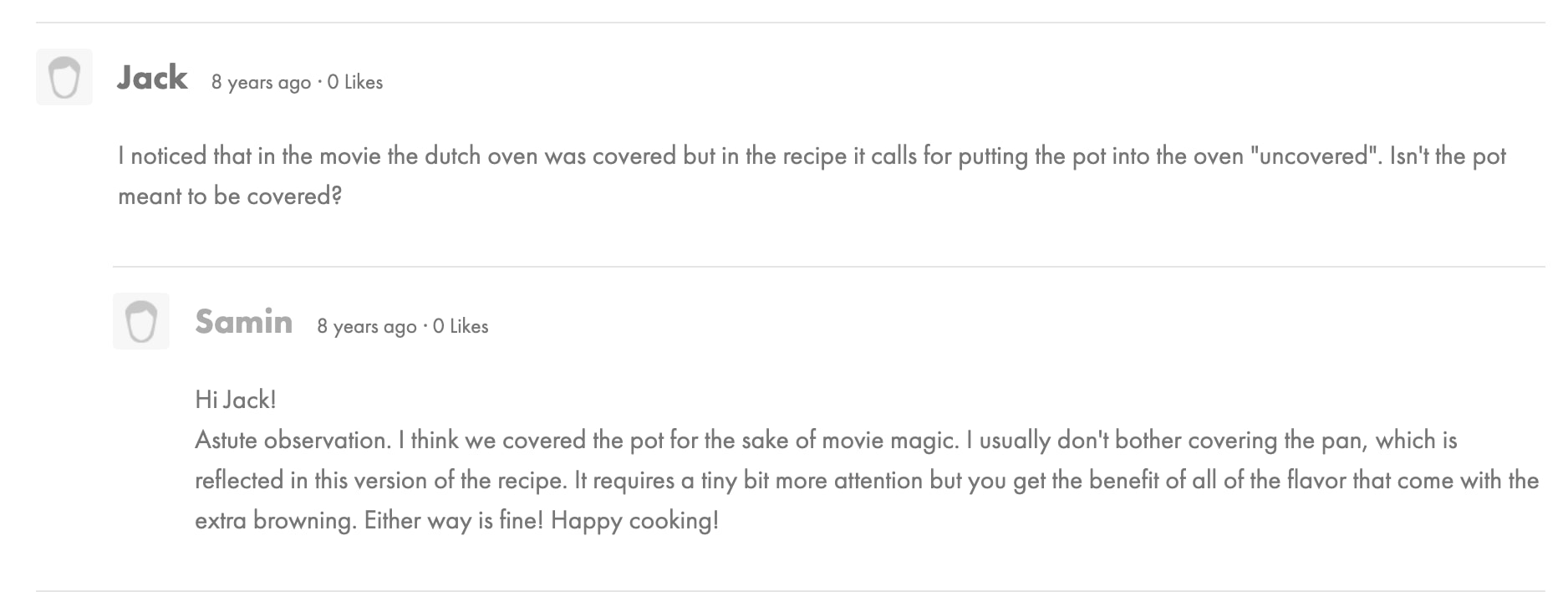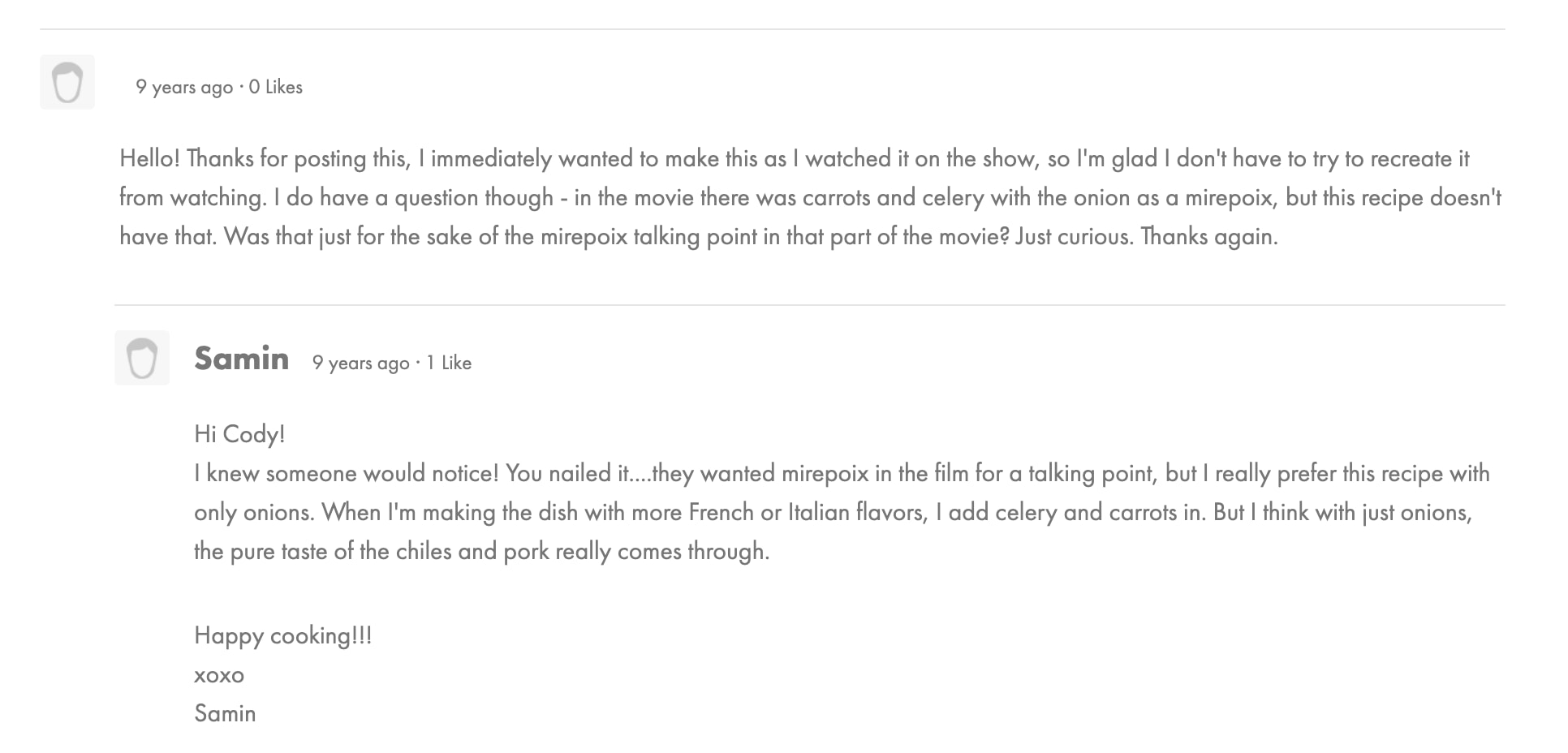Leeway in Cooking
This is a placeholder for me to write more. Bug me if you want to read it.
There’s way more leeway in many aspects of cooking than novice chefs realize. Better chefs intuitively understand this leeway, but I think they almost never quantify it.
Ideal Solution: Ranges
TODO: make low/med/high graphic
My examples
Salt
The easiest example is salt. Ironically, even though it’s the most important, it’s the least specified because there’s significant leeway.
I think almost all chefs don’t realize it’s easy to specify an amount of salt that’s very close to ideal. People repeat facts like, “all tomatoes are different.” While true, the variance you’d use in adjusting salt to a specific tomato is minute compared to the ballpark correct amount. Someone who doesn’t know to salt can get really close to the ideal with a guideline. In other words, people treat this as a game of inches, but it’s a game of miles.
Bon Appetit often does specify salt, which is great because it helps you get in the right ballpark. But unfortunately, measuring out 1.5 tsp salt into a mixture doesn’t help teach how much you need to use when salting many components individually by hand with no guideline.
Herbs
For a dinner entree for 4, you can probably get away with anywhere from 0 to like 1.5 tsp of many different herbs and spices. So if a recipe calls for 1/2 tsp, it’s not worth sweating if you forget or double it.
Overcooking
Foods have vastly different resistances to overcooking. From low to high:
- eggs (seconds leeway) (one little trick: corn starch slurry helps with resistance)
- chicken breast (easily dries out, ~1 minute leeway)
- chicken thigh (~3 minutes leeway)
- pork shoulder (like, hours of leeway)
Steak is hard because we’ve actually quantified this leeway into specific ranges (rare, medium-rare, medium, etc.) and now people target those bands.
Recipe Confusion
The fact that recipes exist confuses novice chefs. They can get stuck in several failure modes following the recipe exactly:
- not making adjustments to heat, salt, etc. based on what’s happening
- not knowing how to salt “to taste”
- not making ingredient substitutions that would be fine (instead, having to purchase exact ingredients)
- not being able to adjust the dish to their preferences
- not being able to improvise when something goes wrong (accidentally added extra X, burned Y, person doesn’t eat Z)
To further add to confusion, baking seems to be more difficult to improvise. I think this is because there’s more chemical reactions and ratios going on to get stuff to, e.g., rise properly. I’m not a baker, but my impression is that the barrier to improvisation is lower for cooking than baking.
Antidotes
Kenji’s POV cooking videos single-handedly taught me so much about this subject. Because you can hear him talking about leeway and improvisation in real-time as he cooks based on what he has available, what he likes, and what’s in season.
I think Samin Nosrat hints at this phenomenon in her Salt Fat Acid Heat book. One good thing she does is describe the variety of meats you can use to cook a dish. Here’s an example from a recipe:
“We made it with pork, but chicken legs and chuck roast, brisket, or short ribs would work equally well. No matter what meat you’re cooking, just keep simmering it until it falls off the bone.”
Real-world Examples
TODO: Find a youtube video I watched that also mentioned this (“basically everything works fine”)
Samin Nosrat’s 2016 pork braise recipe, a variant of which was shown in Michael Pollan’s show, contains several instances where the recipe deviates from the video. It turns out the deviations are all within the leeway threshold. But I think this isn’t obvious unless you have experience several variants cooking this dish—at which point, why bother looking at this recipe in the first place?
She did reply to some comments pointing out these differences, which is great. But it’s a reminder that for amateur chefs, which deviations are fine and which aren’t is completely unobvious.

Uncovered vs covered pot? Even a friend who has cooked this base recipe countless times did not know either way works fine, and thought it was vital to cover the pot.

Base mixture? Unexplained deviation, but leeway is completely fine here.